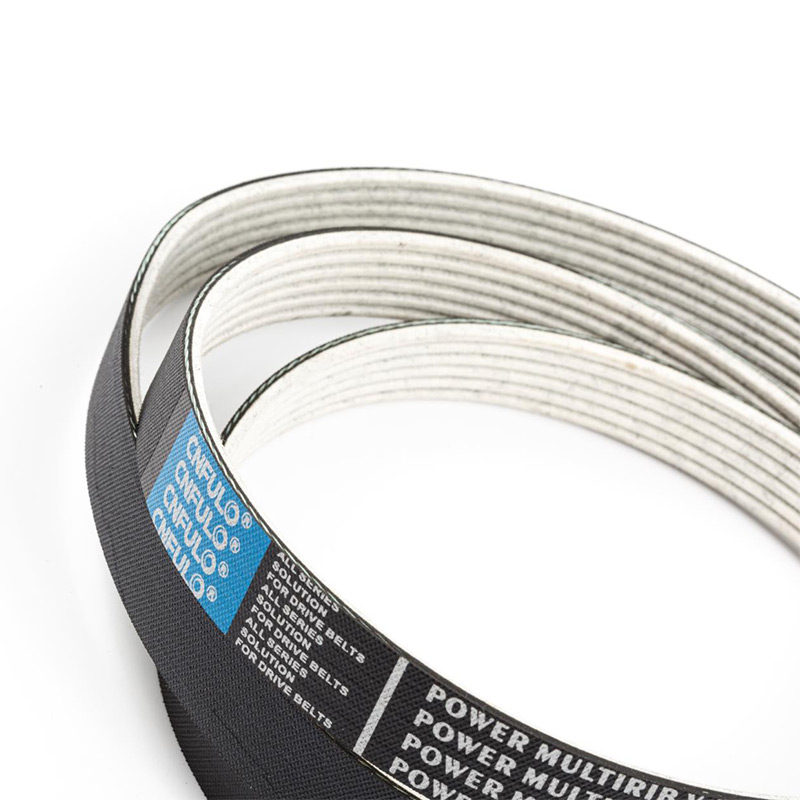Summary:Industrial transmission belts play a crucial role in ensuring the smooth and efficient operation of various equipment used in industries. Whether it's conveying heavy loads, transmitting power, or synchronizing motion, selecting the appropriate trans......
Industrial transmission belts play a crucial role in ensuring the smooth and efficient operation of various equipment used in industries. Whether it's conveying heavy loads, transmitting power, or synchronizing motion, selecting the appropriate transmission belt is vital for maintaining productivity and preventing costly breakdowns. In this article, we will discuss key factors to consider when choosing the right industrial transmission belt for your equipment, along with some examples to illustrate their application.
Identify the Application Requirements:
Understanding the specific requirements of your equipment is the first step in selecting the right transmission belt. Consider factors such as power transmission capacity, speed, load type, environment, and operating conditions. For example:
a) Conveyor Systems: In industries like mining and manufacturing, conveyor belts are used for bulk material handling. For heavy-duty applications, steel cord belts provide high tensile strength and resistance to impact, while modular plastic belts are suitable for light to medium-duty applications that require flexibility and easy maintenance.
b) Power Transmission: In power transmission systems, V-belts are commonly used to transfer power between pulleys. They are suitable for applications with moderate horsepower requirements, while synchronous belts, such as timing belts, are preferred for precise motion control and high torque applications.
Consider Belt Material and Construction:
The choice of belt material and construction depends on factors like load capacity, operating temperature, chemical resistance, and durability requirements. Some examples include:
a) Rubber Belts: Commonly used in applications involving high friction, rubber belts provide excellent grip and flexibility. They are suitable for conveying applications where products need to be moved up an incline or on inclined rollers.
b) Polyurethane Belts: These belts offer excellent abrasion resistance, high load-bearing capacity, and resistance to oils, chemicals, and extreme temperatures. They are often used in applications that require high precision, such as printing, packaging, and robotics.
c) Metal Belts: Stainless steel or carbon steel belts are ideal for applications involving high temperatures, heavy loads, or strict hygiene requirements. They are commonly used in food processing, heat treatment, and glass manufacturing industries.
Assess Maintenance and Operational Considerations:
Maintenance requirements and operational considerations are crucial factors that impact the overall efficiency and lifespan of the transmission belt. Some aspects to consider include:
a) Belt Tension: Proper tensioning ensures optimal power transmission and prevents slippage or premature wear. Belt tensioning systems, such as automatic tensioners or tensioning tools, can simplify maintenance and prolong belt life.
b) Environmental Factors: Consider the presence of moisture, chemicals, oils, or extreme temperatures in the operating environment. For example, in industries where oils or chemicals are present, belts with resistant coatings or materials should be selected to ensure longevity.
c) Maintenance Accessibility: Assess the ease of installation, replacement, and maintenance of the belt. Some belts may require specialized tools or professional assistance, while others can be easily maintained in-house.
Choosing the right industrial transmission belt is essential for optimizing equipment performance, preventing downtime, and ensuring productivity in industrial applications. By understanding the specific requirements of your equipment, considering the appropriate belt material and construction, and assessing maintenance and operational considerations, you can make an informed decision.

The belt body adopts imported high-quality neoprene rubber or EPDM rubber, and is equipped with a variety of rubber accessories and wear-resistant fibers for different purposes; the skeleton material is imported high-quality polyester cord or aramid cord; the back of the belt adopts a flexible light angle Cloth or nylon cloth for protection.
Most of the products are produced by grinding. For PH PJ PK products in larger batches, one-time compression molding can be carried out.
Chloroprene rubber has certain cold and heat resistance. Its flex resistance, aging resistance and ozone resistance are better than general unsaturated rubber, and it has good oil resistance, solvent resistance and chemical stability.
EPDM rubber is more excellent in ozone aging resistance, weather resistance, heat aging resistance, and its electrical insulation properties, chemical corrosion resistance, impact elasticity (good elasticity retention performance at low temperatures).
Its product features are compact structure and large transmission power. Compared with ordinary V-belts, if the space is the same, the transmission power is 30% higher. If the transmission power is the same, the device space will be reduced by 25%; because the product has a thin belt body and flexibility, it is suitable for transmission with small pulley diameters and high-speed transmission. The belt speed can reach 40m/s; it has low vibration and less heat. Running smoothly. After adding polyester, aramid and other short fibers for reinforcement, it can withstand higher lateral pressure and reduce deformation after stress.
